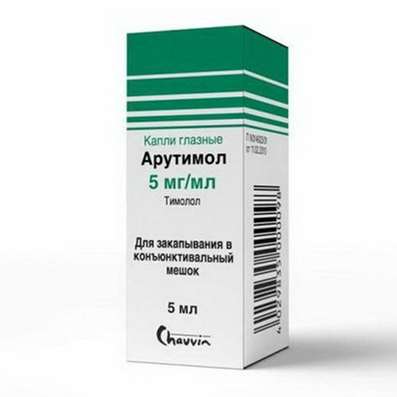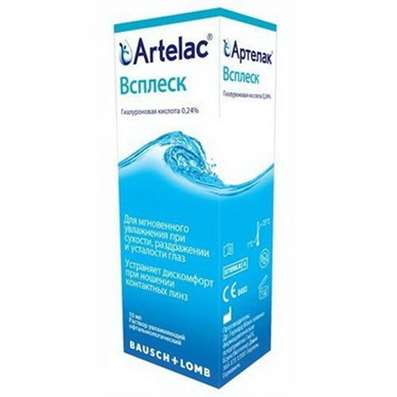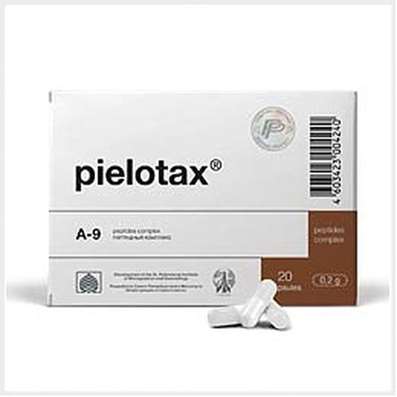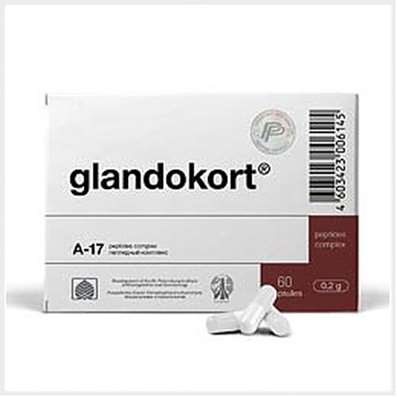Instruction for use: Moxonidine
I want this, give me price
Dosage form: film-coated tablets
Active substance: Moxonidinum
ATX
C02AC05 Moxonidine
Pharmacological group
Hypotensive central agent [I1-imidazoline receptor agonists]
Nosological classification (ICD-10)
I10 Essential (primary) hypertension: hypertension; Arterial hypertension; Arterial hypertension crisis course; Essential Hypertension; Essential hypertension; Essential hypertension; Essential hypertension; Essential hypertension; Primary hypertension; Arterial hypertension, complications of diabetes; The sudden increase in blood pressure; Hypertensive disorders of blood circulation; hypertensive condition; hypertensive crises; arterial Hypertension; malignant Hypertension; Hypertonic disease; hypertensive crises; accelerated hypertension; malignant hypertension; The aggravation of hypertensive disease; Transient hypertension; Isolated systolic hypertension
I15 Secondary hypertension: Arterial hypertension, complications of diabetes; hypertension; The sudden increase in blood pressure; Hypertensive disorders of blood circulation; hypertensive condition; hypertensive crises; hypertension; arterial Hypertension; malignant Hypertension; hypertensive crises; accelerated hypertension; malignant hypertension; The aggravation of hypertensive disease; Transient hypertension; hypertension; Arterial hypertension; Arterial hypertension crisis course; renovascular hypertension; Hypertension symptomatic; Renal hypertension; Renovascular hypertension; renovascular hypertension; Symptomatic hypertension
Composition
Tablets covered with a film coating.
active substance: Moxonidine 0.2 mg; 0.3 mg; 0.4 mg
Excipients
Nucleus: croscarmellose sodium (impellosis) - 3/3/3 mg; Lactose monohydrate (lactopress, milky sugar) - 95.3 / 95.2 / 95.1 mg; Silicon dioxide colloid (aerosil) - 0.5 / 0.5 / 0.5 mg; Sodium stearyl fumarate - 1/1/1 mg
Film sheath: Opadry II (polyvinyl alcohol, partially hydrolyzed - 1.32 / 1.32 / 1.32 mg, titanium dioxide (E171) - 0.6027 / 0.6003 / 0.5751 mg, talc 0.6 / 0,6 / 0,6 mg, macrogol (polyethylene glycol 3350) - 0,3705 / 0,3705 / 0,3705 mg, soy lecithin (E322) - 0,105 / 0,105 / 0,105 mg, iron dye oxide (II) yellow - 0 , 0003/0/0 mg, iron dye oxide (II) red - 0.0015 / 0/0 mg, aluminum lacquer based on the dye of the crimson (Ponso 4R) - 0 / 0.0039 / 0.0123 mg, aluminum varnish on Based dye "Sunset Sun" yellow - 0 / 0.0003 / 0 mg, aluminum lacquer based on indigo carmine - 0/0 / 0.0018 mg, aluminum paint based on colors To azorubin - 0/0 / 0.0153 mg)
Description of dosage form
Tablets, 0.2 mg: film-coated, light pink, round, biconvex. On a break - white or nearly white.
Tablets, 0.3 mg: film-coated pink, round, biconvex. On a break - white or nearly white.
Tablets, 0,4 mg: covered with a film shell of dark pink color, round, biconvex. On the fracture - white or almost white.
Pharmachologic effect
Mode of action - hypotensive.
Pharmacodynamics
Moxonidine is an antihypertensive drug with a central mechanism of action. In stem brain structures (the rostral layer of the lateral ventricles), moxonidine selectively stimulates imidazoline-sensitive receptors that participate in tonic and reflex regulation of the sympathetic nervous system. Stimulation of imidazoline receptors decreases peripheral sympathetic activity and blood pressure. Moxonidine differs from other central antihypertensive agents with a lower affinity for α2-adrenergic receptors, which explains the lower probability of developing sedation and dry mouth. The use of moxonidine leads to a decrease in systemic vascular resistance and blood pressure. Moxonidine improves the insulin sensitivity index by 21% (in comparison with placebo) in patients with obesity, insulin resistance and moderate degree of hypertension.
Pharmacokinetics
Suction. After oral administration, moxonidine rapidly and almost completely absorbed in the upper GI tract. Absolute bioavailability is approximately 88%. Tmax - about 1 hour. Food intake does not affect the pharmacokinetics of the drug.
Distribution. The connection with plasma proteins is 7.2%.
Metabolism. The main metabolite is deoxidized moxonidine. The pharmacodynamic activity of dehydrogenated moxonidine is about 10% of that of moxonidine.
Excretion. T1 / 2 moxonidine and metabolite is 2.5 and 5 hours, respectively. Within 24 hours, over 90% of moxonidine is excreted by the kidneys (about 78% unchanged and 13% in the form of dehydroxymycinidine, while other metabolites in urine do not exceed 8% of the dose taken). Less than 1% of the dose is excreted through the intestine.
Special patient groups
Arterial hypertension. In comparison with healthy volunteers, patients with hypertension do not have any changes in the pharmacokinetics of moxonidine.
Elderly age. Clinically insignificant changes in pharmacokinetic parameters of moxonidine in elderly patients, probably caused by a decrease in the intensity of its metabolism and / or slightly higher bioavailability, were noted.
Children. Moxonidine is not recommended for use in patients younger than 18 years of age, and therefore pharmacokinetic studies have not been conducted in this group.
Renal insufficiency. The excretion of moxonidine is largely correlated with the clearance of creatinine. In patients with moderate renal insufficiency (Cl creatinine 30-60 ml / min) Css in plasma and final T1 / 2 are approximately 2 and 1.5 times higher than in patients with normal renal function (Cl creatinine more than 90 ml / min ). In patients with severe renal failure (Cl creatinine less than 30 ml / min), Css in the blood plasma and the final T1 / 2 is 3 times higher than in patients with normal renal function. The administration of multiple doses of moxonidine leads to predictable cumulation in patients with moderate and severe renal insufficiency. In patients with terminal renal failure (Cl creatinine less than 10 ml / min) on hemodialysis, Css in plasma and final T1 / 2, respectively, are 6 and 4 times higher than in patients with normal renal function. In all Cmax groups, moxonidine in blood plasma is 1.5-2 times higher. In patients with renal impairment, the dosage should be individualized. Moxonidine is slightly excreted in hemodialysis.
Indications of Moxonidine
Arterial hypertension.
Contraindications
Hypersensitivity to the active substance and other components of the drug;
Syndrome of weakness of the sinus node;
Pronounced bradycardia (resting heart rate less than 50 bpm);
Atrioventricular blockade of II and III degree;
Severe heart rhythm disturbances;
Acute and chronic heart failure (NYHA class III-IV functional class);
Simultaneous use with tricyclic antidepressants (see "Interaction");
Severe renal failure (Cl creatinine less than 30 mL / min);
hemodialysis;
Hereditary lactose intolerance, lactase deficiency or malabsorption of glucose-galactose;
Lactation period;
Patients older than 75 years;
Patients under 18 years of age (due to a lack of safety and efficacy data).
With caution: atrioventricular blockade of the 1st degree (risk of developing bradycardia); Severe coronary artery disease; Severe ischemic heart disease or unstable angina (experience with use is inadequate); Chronic heart failure; Severe hepatic impairment; Impaired renal function (Cl creatinine more than 30 ml / min).
Application in pregnancy and lactation
There are no clinical data on the use of moxonidine in pregnant women. In the course of animal studies, the embryotoxic effect of the drug was established. Moxonidine-SZ should be given to pregnant women only after a thorough assessment of the risk-benefit relationship, when the benefit to the mother exceeds the potential risk to the fetus.
Moxonidine penetrates breast milk and should not be given during breastfeeding. If you need to use Moxonidine-SZ during lactation, breastfeeding should be discontinued.
Side effects
The frequency of side effects listed below was determined as follows: very often (≥1 / 10); Often (≥1 / 100, <1/10); Infrequently (≥1 / 1000, <1/100), including individual messages.
From the side of the central nervous system: often - headache *, dizziness (vertigo), drowsiness; Infrequently - a syncope *.
From the CVS: infrequent - a pronounced decrease in blood pressure, orthostatic hypotension *, bradycardia.
From the gastrointestinal tract: very often - dryness of the oral mucosa; Often - diarrhea, nausea, vomiting, indigestion.
From the skin and subcutaneous tissues: often - skin rash, itching; Infrequently - angioedema.
Mental disorders: often - insomnia; Infrequently - nervousness.
From the side of the organ of hearing and labyrinthine disorders: infrequent - ringing in the ears.
From the musculoskeletal and connective tissue: often - pain in the back; Infrequently - pain in the neck.
General disorders and disorders at the injection site: often - asthenia; Infrequent peripheral edema.
* The frequency is comparable with placebo.
Interaction
The combined use of moxonidine with other antihypertensive agents leads to an additive effect.
Tricyclic antidepressants can reduce the effectiveness of antihypertensive agents of central action, and therefore it is not recommended that they be taken together with moxonidine.
Moxonidine can enhance the effect of tricyclic antidepressants, tranquilizers, ethanol, sedatives and hypnotics.
Moxonidine is able to moderately improve impaired cognitive function in patients receiving lorazepam.
Moxonidine may enhance the sedative effect of benzodiazepine derivatives when administered concomitantly.
Moxonidine is excreted by tubular secretion. Therefore, its interaction with other drugs released by tubular secretion is not excluded.
Beta-adrenoblockers increase bradycardia, the severity of negative foreign and dromotropic effects.
Dosing and Administration
Inside, regardless of food intake. In most cases, the initial dose of the drug Moxonidine-SZ is 0.2 mg / day. The maximum single dose is 0.4 mg. The maximum daily dose, which should be divided into 2 divided doses, is 0.6 mg.
Individual correction of the daily dose is necessary depending on the patient's tolerability of the therapy.
Dose adjustment for patients with hepatic insufficiency is not required.
The initial dose for patients with moderate or severe renal insufficiency is 0.2 mg / day.
If necessary and with good tolerability, the daily dose can be increased to a maximum of 0.4 mg.
Overdose
There are reports of several cases of overdose without a fatal outcome, when doses up to 19.6 mg were applied at the same time.
Symptoms: headache, sedative effect, marked decrease in blood pressure, dizziness, asthenia, bradycardia, dryness of the oral mucosa, vomiting, fatigue, pain in the epigastric region, respiratory depression and impaired consciousness. In addition, short-term increases in AD, tachycardia and hyperglycemia are also possible, as shown in several studies on high doses in animals.
Treatment: a specific antidote of the drug does not exist. In the case of a marked decrease in blood pressure, recovery of BCC due to the introduction of fluid and dopamine (injection) may be required. Bradycardia can be stopped with atropine (injection). In severe cases of overdose, it is recommended to carefully monitor the disturbance of consciousness and not to allow respiratory depression. Alpha-adrenoreceptor antagonists can reduce or eliminate paradoxical hypertensive effects in overdose of moxonidine. Moxonidine is slightly excreted in hemodialysis.
Special instructions
If it is necessary to cancel simultaneously taken beta-blockers and the drug Moxonidine-SZ, first abolish beta-blockers and only after a few days of Moxonidine-SZ.
Currently, there is no evidence that stopping the use of Moxonidine-SZ leads to an increase in blood pressure. However, it is not recommended to stop taking the drug Moxonidine-SZ sharply, instead, you should gradually reduce the dose of the drug within 2 weeks.
During the treatment should be excluded from drinking alcohol.
During treatment, regular monitoring of heart rate and ECG is necessary.
Influence on the ability to drive vehicles and work with machinery. The effect of Moxonidine-SZ on the ability to drive vehicles or control technology was not studied. However, taking into account the possibility of dizziness and drowsiness, patients should be careful in dealing with potentially hazardous activities requiring increased attention, such as driving vehicles or controlling equipment.
Release Form
Tablets, film-coated, 0.2 mg, 0.3 mg and 0.4 mg. In the outline of the cell, 10, 14 or 30 pcs. In a polymer can or in a polymer bottle, 60 pcs. Each bank, vial, 3 contourcell packs of 10 tablets, 1, 2 contourcell packs of 14 or 30 tablets. In a cardboard box.
Manufacturer by
ZAO Severnaya Zvezda.
Conditions of supply of pharmacies
On prescription.
Storage conditions of the drug Moxonidine
In dry, the dark place at a temperature of no higher than 25 ° C.
Keep out of the reach of children.
The shelf life of the drug Moxonidine
3 years.
Do not use beyond the expiration date printed on the package.

 Cart
Cart





